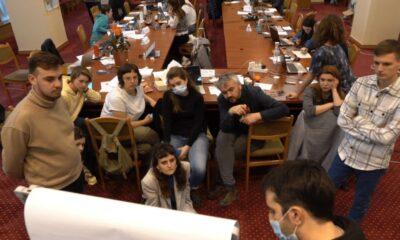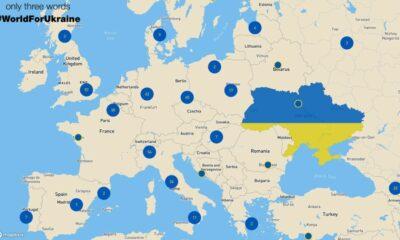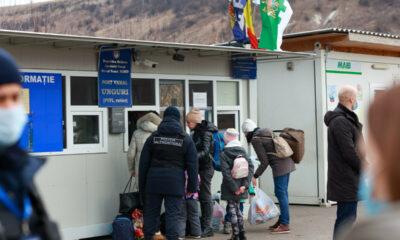Economy
IMF's 2009 snapshot of Moldova's economy
Reading Time: 4 minutes The IMF staff report on the Republic of Moldova published on February 1, 2010, gives a snap-shot of this poor countrys economy. The report is based on discussions with the officials of the Republic of Moldova on economic developments and policies that ended on October 28, 2009.
The International Monetary Fund (IMF) staff report on the Republic of Moldova published on February 1, 2010, gives a snapshot of this former Soviet republic’s economy. The report is based on discussions held by IMF staff with the officials of the Republic of Moldova on economic developments and policies that ended on October 28, 2009. The report was issued in connection with the International Monetary Fund’s approval on January 29 of a three-year combined financial assistance to Moldova in the amount of US$574.4 million to support the country’s economic program aimed at restoring fiscal and external sustainability, preserving financial stability, reducing poverty, and raising growth.
Moldova experienced strong growth over 2006–08, accompanied by signs of overheating. Growth averaged 5 percent, boosted by remittances and foreign investment. Buoyant domestic demand, however, pushed the current account deficit to 17 percent of GDP and generated inflation pressures. These pressures, together with large inflows, resulted in substantial appreciation of Moldova’s real effective exchange rate (REER). Monetary policy kept real interest rates low despite double-digit inflation (Figure 1). Although fiscal policy maintained a small headline budget deficit under the IMF PRGF-supported program, it grew increasingly procyclical, with the estimated structural balance deteriorating from a small surplus in 2005 to a deficit of over 4 percent of GDP by 2008.
The economy remained overregulated and hampered by relative price distortions. High barriers to entry and low competition in telecommunications, trade, and food processing kept domestic prices significantly above international prices of many consumer products. In contrast, utility tariffs generally remained well below cost-recovery levels, leading to substantial arrears and underinvestment.
The global economic crisis led to a sharp weakening of the economy. In the first half of 2009, falling demand in trading partners led to a severe downturn in exports and remittances. While GDP dropped by nearly 8 percent over the same period, domestic demand declined even faster, and the current account deficit contracted to about 11 percent of period GDP. At the same time, the balance of payments moved from a surplus to a large deficit as FDI and other capital inflows fell dramatically. Deflation pressures emerged, with the 12- month inflation at -0.7 percent in November (Figure 1).
Two rounds of parliamentary elections marked a rise in political instability in 2009. The April elections were followed by strong protests against alleged irregularities and boycott of the parliament by the opposition parties. A repeat election held in July led to the formation of a new four-party coalition government with a narrow majority. However, political uncertainty persists as parliament failed to elect a President of the republic.
The crisis and pre-election spending hikes resulted in a large increase in the fiscal deficit. Over January-September 2009, budget revenue dropped by about 10 percent in real terms relative to 2008 as absorption-related tax receipts declined. At the same time, current fiscal expenditure increased by over 13 percent (also in real terms), driven by large increases in wages and pensions in the run-up to the April elections. The fiscal deficit increased from 1 percent of GDP in 2008 to 6¼ percent of GDP in January-September 2009, financed mainly by a drawdown of balances in budget accounts and heavy domestic borrowing. The budget began to experience financing shortfalls, and arrears started to accumulate. Policy slippages derailed the PRGF-supported program, which expired in May 2009 without completion of the last two reviews.
The authorities used most of their SDR allocation for budget financing in late 2009. The Ministry of Finance assumed an obligation of SDR 114.3 million to the members of the SDR department (out of a total allocation of SDR 117.7 million). Given the severe external financing shortages and the difficulties in adjusting inherited expenditure commitments in the short run, this operation reduced reliance on expensive short-term domestic financing and cleared accumulated expenditure arrears. The NBM’s gross international reserves were not affected as the foreign exchange equivalent of the SDRs was sold to the central bank.
Monetary policy has been tight despite falling inflation. Resisting sustained depreciation pressures, the National Bank of Moldova (NBM) sold about a third of its international reserves in early 2009, sharply tightening liquidity despite rapidly falling inflation. Nevertheless, the REER depreciated notably in January—April 2009, and again in December (10 percent), offsetting in large part the appreciation seen in previous years. Since May, the NBM partially replenished its reserves, cut its base rate by 6 percentage points and lowered reserve requirements in half. Nonetheless, commercial banks’ lending rates remain very high in real terms, contributing—together with the depressed economy—to a sharp drop in demand for credit (Figure 1). The supply of credit has also tightened, as banks channel the released liquidity into T-bills or keep it deposited with the NBM.
While the financial system appears stable, the recession is affecting credit quality, and one bank has been closed. The decline in credit and bank capital increases brought the capital adequacy ratio of the system to 32.7 percent in November 2009, well above the required minimum of 12 percent. Foreign banks have been maintaining exposure to their Moldovan subsidiaries, which account for 26 percent of banking system assets. Stress tests conducted by the NBM confirm that most banks’ portfolios are robust to various risks. However, the nonperforming loan ratio reached 16.6 percent in November 2009, and provisioning remains low. Moreover, one medium-size bank (Investprivatbank, IPB) became insolvent in June as a result of high portfolio concentration in recession-hit sectors and risk management irregularities. At the same time, low bank interconnectedness limits the systemic threat from individual bank failures. Moreover, the NBM has stepped up its supervision and regulation.
Difficulties in maintaining cost-recovery tariffs for district heating continue, creating a budget risk. The municipality of Chisinau has kept the district heating tariff at its 2007 level despite the significant cost increase since then. As a result, the heating company has been running large losses and accumulating arrears to its suppliers, exceeding 3 percent of GDP by late 2009. Nonpayment to the gas supply company risks a repeat of the 2008 cut-off in gas supplies to heat producers. The tension between the below-cost tariff and the need to ensure adequate payments to suppliers creates a risk for the consolidated budget, as it may be called upon for financing.
Debt is sustainable at present, but vulnerabilities are rising. The debt sustainability analysis (DSA) indicates that Moldova’s risk of debt distress is low given presently envisaged borrowing, mainly from IFIs. However, alternative scenarios suggest that rapid accumulation of nonconcessional debt—faster than US$125 million per year—can increase the risk of debt distress, warranting caution. Moreover, high private external debt for a developing country (44 percent of GDP) also signals heightened vulnerabilities.
Economy
Moldova will receive a disbursement of 36 million euros as part of the the Economic Recovery Plan
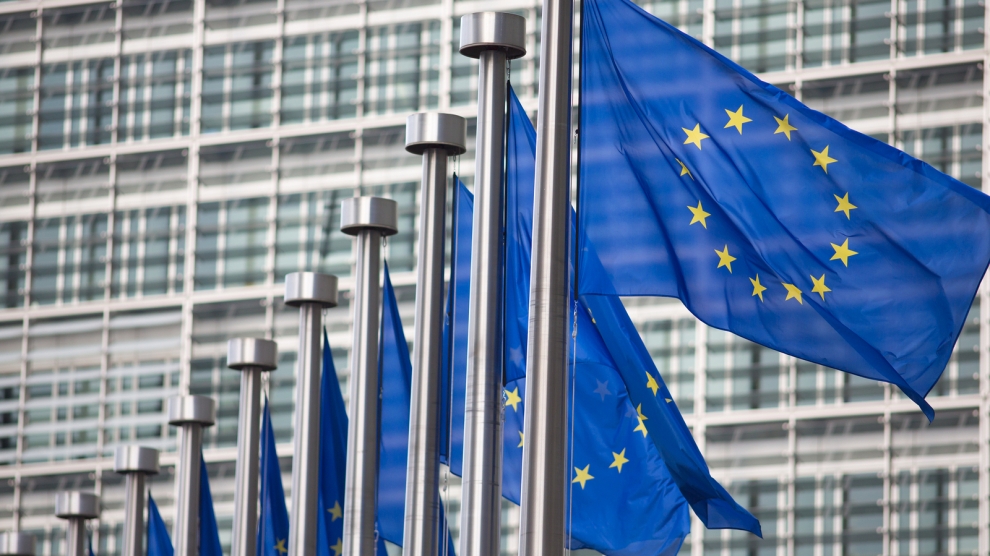
This week, the European Commission approved the disbursement of 36 million euros in grant money for the Republic of Moldova. The announcement was made by Deputy Director-General for Neighbourhood Policy and Enlargement Negotiations at the European Commission, Katarina Mathernova, who paid an official visit to the Republic of Moldova between September 13-15, together with Managing Director for Russia, Eastern Partnership, Central Asia, Regional cooperation and OSCE, at the European External Action Service, Michael Siebert.
The EU officials had meetings with President Maia Sandu, Minister of Foreign Affairs and European Integration, Nicu Popescu, Speaker of Parliament, Igor Grosu, Prime Minister of the country, Natalia Gavrilita, as well as key representatives of Government, international financial institutions and the civil society, according to a press release issued by the Delegation of the European Union to the Republic of Moldova.
Beside such topics as the EU-Moldova relations and prospects, the priorities of the reform agenda of the new Moldovan Government, preparations for the Eastern Partnership Summit at the end of the year and the Transnistrian conflict settlement, the officials also discussed the EU assistance in support of reforms and the Economic Recovery Plan for Moldova, which was announced in June with a total EU support of 600 million euros over the next 3 years.
“The first measures under the Economic Recovery Plan will shortly materialize, with the expected disbursement of 36 million euros in grant money under budget support programmes to support the authorities’ efforts to fight against the consequences of the pandemic. Moldova can count on EU’s assistance on its path to reforms and to recovery, bringing tangible results to citizens,” Katarina Mathernova stated.
The plan is based on assistance provided by the European Union through various bilateral and regional instruments, aiming to mobilize the funds in the form of grants, loans, guarantees and macro-financial assistance.
“The Economic Recovery Plan for the Republic of Moldova involves much more, not just this financial support provided immediately. It must help digital transformation, strengthen infrastructure, energy efficiency, education and support small and medium-sized enterprises,” the EU official also said.
As Prime Minister Natalia Gavrilita informed, “The Economic Recovery Plan and the 5 flagship initiatives for Moldova in the Eastern Partnership will directly contribute to the reform and consolidation of institutions, stimulate long-term socio-economic development, bring direct benefits to citizens, and unleash new economic opportunities through promoting the green agenda and digitization. Small and medium-sized enterprises (SMEs) have been hit hard by the crisis. Promoting and diversifying access to finance and reducing collateral requirements will be essential in supporting economic operators. We are grateful to the EU partners who will launch two programs to support 50 000 independent Moldovan SMEs to adapt to the new conditions.”
President of the Republic of Moldova, Maia Sandu, welcomed the decision of the European Union to disburse about 745 million lei in grant money, as the official page of the President’s Office announced. “EU support comes after a long period of freezing of European assistance, caused by former governments. We managed to relaunch the political dialogue with the European Union and resume financial assistance. The Republic of Moldova is gradually regaining the trust of its strategic partners. This European support is also a signal of encouragement for the new Government team in its commitment to clean up the institutions, fight corruption and launch development programs in the country,” said Maia Sandu.
Photo: unknown
Economy
Romania and Moldova signed a partnership memorandum pledging to cooperate in promoting their wines
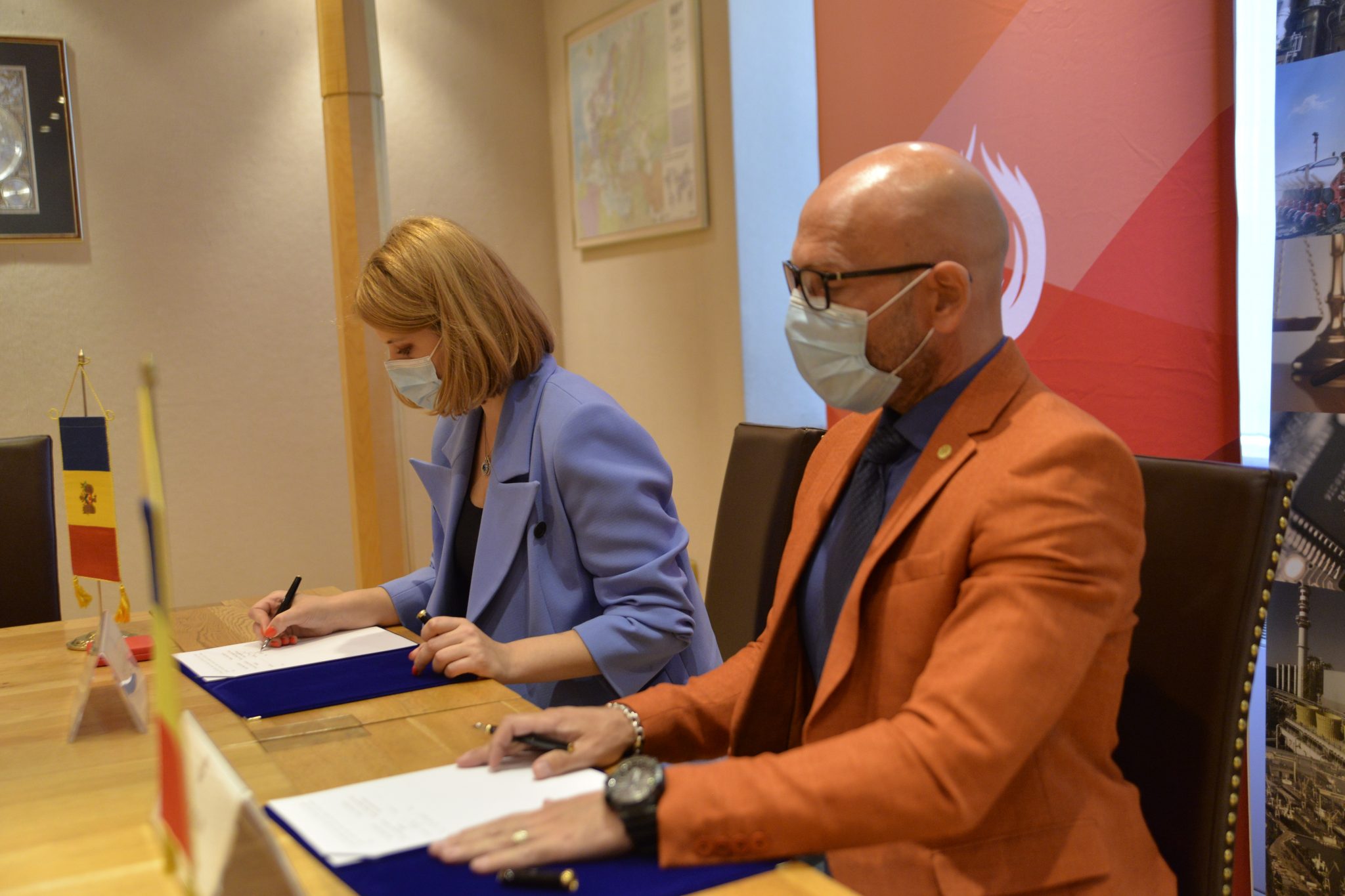
The Chamber of Commerce and Industry of Romania (CCIR) and the National Office for Vine and Wine (NOVW) of the Republic of Moldova signed, last week, a memorandum of cooperation on organizing joint promotional activities in the markets of common interest, as the CCIR announced.
China, Japan or the USA are just some of the markets targeted by the Romanian and Moldovan institutions. The memorandum also involves advertising activities for wines from common indigenous varieties, promoting the oeno-tourist region, developing a tourist route in the two states, exchange of experience, study visits, and mutual support in identifying new export opportunities. “We are very confident that this collaboration between our organizations will lead to sustainable economic growth and a higher degree of well-being among Moldovans and Romanians,” claimed Deputy Secretary-General of CCIR, Bogdan Visan.
On the other hand, Director of the NOVW, Cristina Frolov, declared that no open competition with Romania is aimed at the governmental level of the Republic of Moldova. “This request for collaboration is a consequence of the partnership principle. Romania imports 10-12% of the wine it consumes, and we want to take more from this import quota. Every year, the Romanian market grows by approximately 2.8%, as it happened in 2020, and we are interested in taking a maximum share of this percentage of imported wines without entering into direct competition with the Romanian producer,” the Moldovan official said. She also mentioned that Moldova aims at increasing the market share of wine production by at least 50% compared to 2020, and the number of producers present on the Romanian market – by at least 40%.
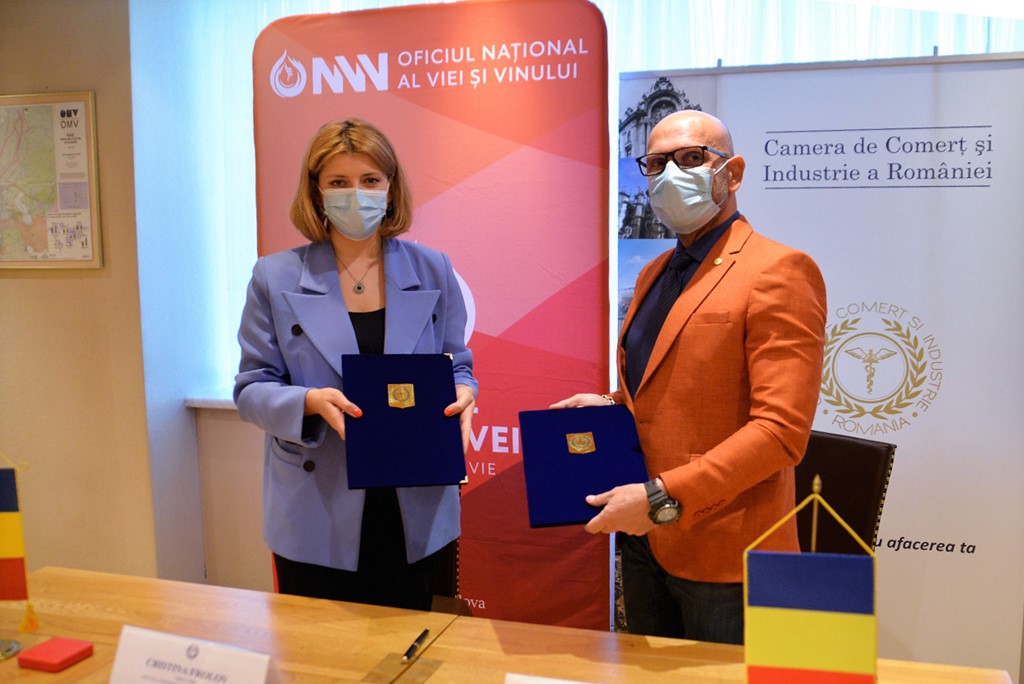
Source: ccir.ro
**
According to the data of the Romanian National Trade Register Office, the total value of Romania-Moldova trade was 1.7 billion euros at the end of last year and over 805 million euros at the end of May 2021. In July 2021, there were 6 522 companies from the Republic of Moldova in Romania, with a total capital value of 45.9 million euros.
The data of Moldova’s National Office of Vine and Wine showed that, in the first 7 months of 2021, the total quantity of bottled wine was about 27 million litres (registering an increase of 10% as compared to the same period last year), with a value of more than one billion lei, which is 32% more than the same period last year. Moldovan wines were awarded 956 medals at 32 international competitions in 2020.
Photo: ccir.ro
Economy
Moldova’s hope to be a top walnut exporter and its main difficulties

The Republic of Moldova has perfect weather conditions for growing walnut trees, that creating a great potential of walnut production and trade, especially on international markets, where the demand is way higher than the product’s supply. National and international experts believe that the country’s walnut production industry is on the verge of important transformations, which could lead to increased yields, quality and competitiveness worldwide.
According to authorities, Moldova exports 34-35 thousand tons of walnuts in shell, which is about 7% of the total export of fruit and 5% of the total export of horticultural products. The export value is assessed as being $120 million, that being 57-60% of the total fruit export value and about 50% of horticultural export value. Most of walnut crops are exported to the EU countries, such as France, Germany, the Netherlands, Romania and Austria. The country’s exports were among the world’s top 10 when it comes to the highest dollar value of the product during 2020.
Viorel Gherciu, Minister of Agriculture and Food Industry, pointed out that the production in the domestic walnut industry has increased by 55% in the last five years, which ranks Moldova among the main producers in the world.
“The biggest opportunity for this industry is that we are in the geographical proximity of the largest walnut import area in the world, which is the European Union, with almost 40% of total imports in the world. We are on the EU border, with privileged relations, with an Association Agreement. We already enjoy a good relationship in working with European importers, they trust our processors. A very close collaboration has been created and this is, in fact, the guarantee for those who invest in the area,” claimed the president of the Walnut Producers Association, Oleg Tirsina.
The data provided by the National Bureau of Statistics show that there are 34.7 thousand hectares of walnut plantations in the country. 20.90 hectares are represented by orchards. 75% of planted orchards are formed of old varieties trees. 30-35% of the exported production comes from orchards, the rest comes from individual farmers and plantations along the roads. This means that the quality of walnut production is not at its maximum potential. Developing commercial plantations through orchards modernization and extension of walnut varieties would provide double yield and better quality, experts say.
Governmental support in the form of subsidizing solutions, foreign investments and credit options are indispensable for the industry development. One of the financing options is the credit line of the European Investment Bank Project. Since 2016, 15 producers and processors of nuts, almonds and hazelnuts have benefited from these loans with the total amount of investments worth 8.7 million euros. A further extension of the project would provide another 60 million euros for the modernization of the horticultural sector in general and for harvesting organic walnuts in particular.
Photo: heymoldova.com


